The Quaker concept of bearing witness is one of the guiding principles of Greenpeace. Nowhere is this more manifest than in the images we produce.
One of the founders of Greenpeace, Bob Hunter, proposed the notion of ‘Mind Bombs’ – when an image is so powerful it is like a bomb going off in your head.
Today, in a world saturated by images, a photograph still has the power to move one to action. We take a look back through the lens at some of the Greenpeace images that have helped to change the world for the better.
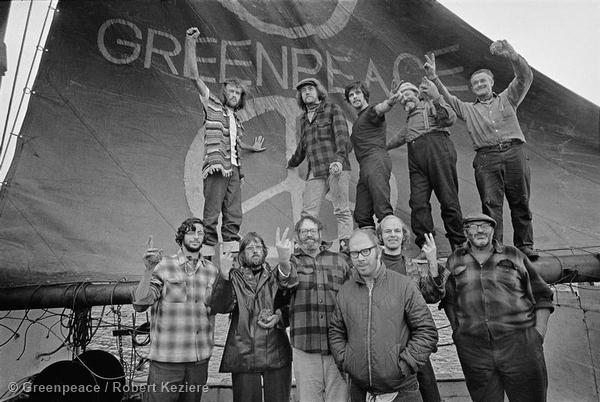
In 1971, the environment movement became a modern cultural phenomenon with the formation of Greenpeace. Since then, the world has seen the environment become one of the planet’s major concerns – never more so than today when we face catastrophic climate change.
This is a photographic record by Robert Keziere of the very first Greenpeace voyage, which departed Vancouver on the 15 September 1971. The aim of the trip was to halt nuclear tests in Amchitka Island by sailing into the restricted area.
The crew on board the ship formed the original group that became Greenpeace. Clockwise from top left, they are: Hunter, Moore, Cummings, Metcalfe, Birmingham, Cormack, Darnell, Simmons, Bohlen, Thurston, and Fineberg.
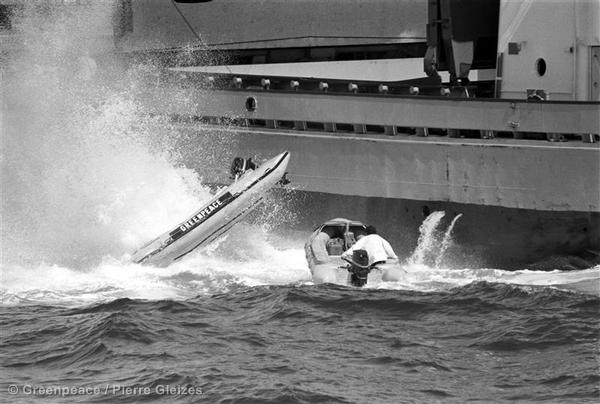
Non-Violent Direct Action was foundational to Greenpeace as it became a movement of people willing to put their lives on the line for a greater good.
In this photo, Greenpeace activists in inflatable boats protest against the dumping of nuclear waste by dumpship Rijnborg. Two barrels are dropped from the dump ship on top of a Greenpeace inflatable causing it to capsize and seriously injure Willem Groenier, the pilot of the inflatable.
The dumping of nuclear waste at sea is now illegal thanks to actions such as these.
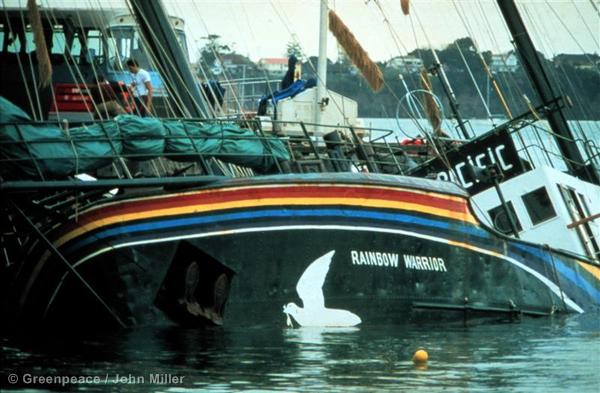
In 1985, the Greenpeace Rainbow Warrior was bombed by French secret service agents, tragically killing Greenpeace photographer Fernando Pereira. The ship and crew were in Auckland protesting nuclear testing in the Pacific.
The bombing of the Rainbow Warrior caused global headlines, making people around the world realise the powerful forces that groups like Greenpeace were up against.
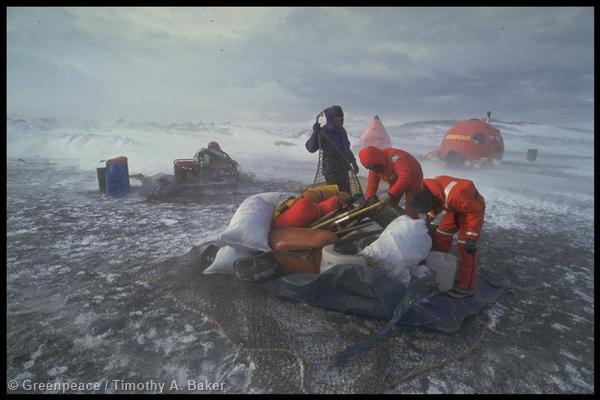
After a long and seemingly impossible campaign, Antarctica was declared a World Park, proving that dedication and never giving up will deliver results. This photo captures the final day of establishing the World Park Base in 1992.
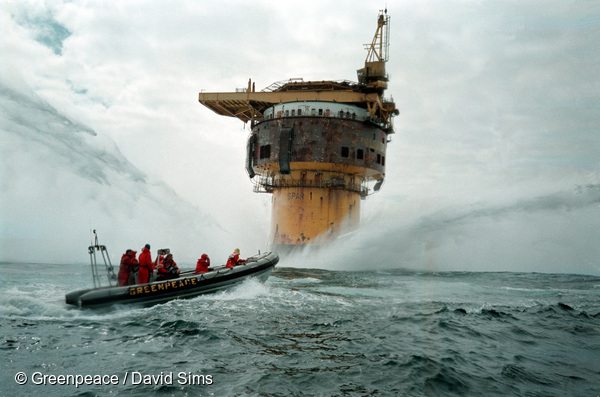
This photo depicts Greenpeace’s second occupation of Shell’s disused North Sea oil installation in two months in 1995.
With the campaign against the Brent Spar oil platform we saw how good strategies and determined action can change the world – the dumping of toxic materials in the North Sea is now banned.
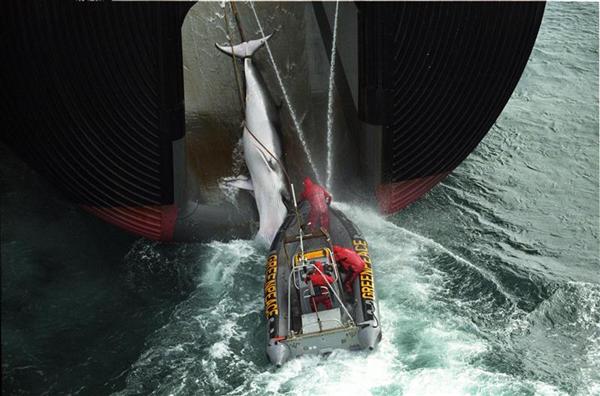
Greenpeace brought the reality of whaling to the world – and photography was an incredibly powerful medium for this communication. Here, a Greenpeace inflatable boat hooks onto a Japanese whaling boat while it is pulling a caught whale on board.
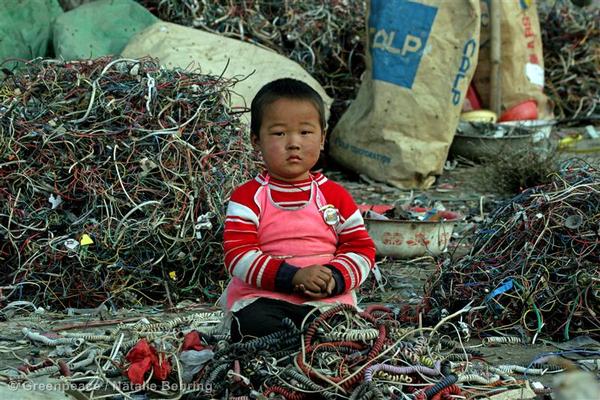
Here, a small Chinese child is sitting among cables and e-waste, in Guiyu, China. This photo helped bring the world’s eyes to the impacts of electronic waste.
Much of modern electronic equipment contains toxic ingredients. Vast amounts are routinely and often illegally shipped as waste from Europe, USA and Japan to countries in Asia as it is easier and cheaper to dump the problem on poorer countries with lower environmental standards.
This practice exposes the workers and communities involved in dismantling e-waste to serious, environmental problems, danger and health hazards. Greenpeace is strongly urging major manufactures to exclude toxic materials from their products.
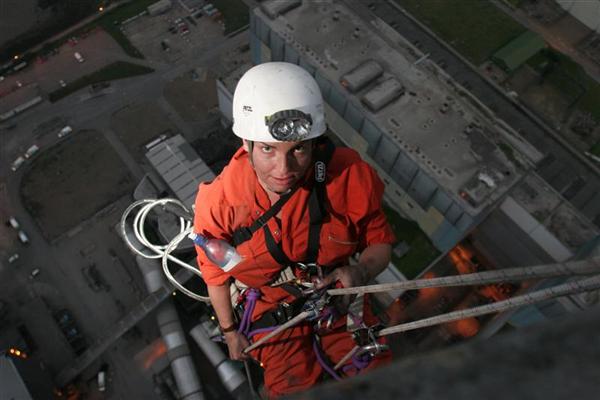
This activist, part of the 2007 Kingsnorth action in the UK, went through a lengthy and historic trial resulting in acquittal.
In the trial, the judge summated that the activists were taking action for the greater good of humanity by preventing CO2 emissions. The case has since been used as a precedent and shows a shift towards global climate justice.
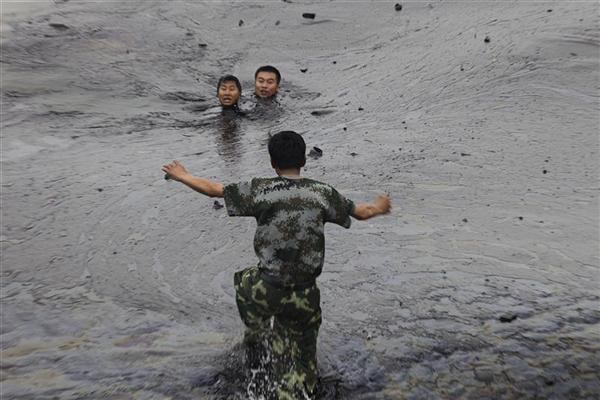
In 2010, workers attempting to fix an underwater pump after a pipeline blast at the Dalian Port, China, ran into trouble. During oil spill cleanup operations, the workers struggled in thick oil slick, and tragically, one firefighter was killed.
This image travelled the world as a defining photo of the dangers faced by workers associated with extractive industry.
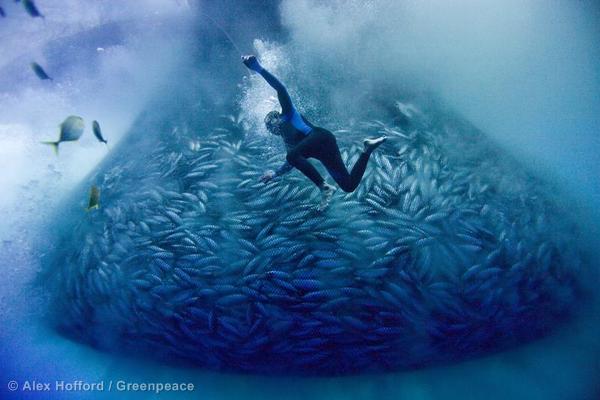
Diver Joel Gonzaga of the Philippine purse seiner ‘Vergene’ at work using only a single air compressor hose to the surface, in and around a skipjack tuna purse seine net, in the international waters of high seas pocket.
Fish stocks are plummeting around the world, especially tuna stocks. Photos like this help capture and communicate the impact of overfishing.
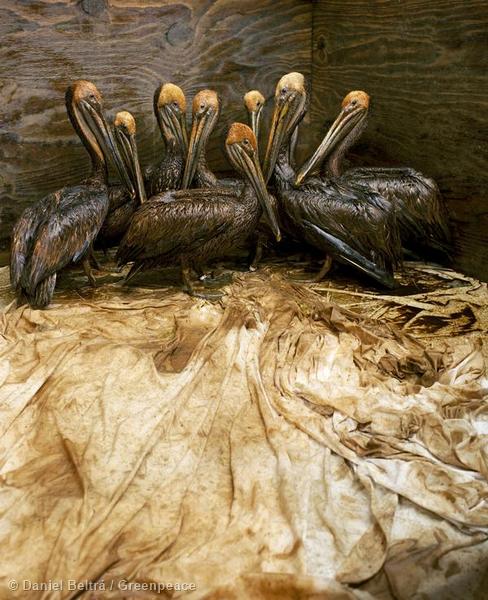
This powerful photograph shows adult brown pelicans waiting in a holding pen to be cleaned by volunteers at the Fort Jackson International Bird Rescue Research Center in Buras.
These birds were covered in oil from the Deepwater Horizon wellhead disaster. The BP-leased Deepwater Horizon oil platform exploded on 20 April and sank after burning.
Greenpeace is a movement of people like you, standing up for our forests, oceans, and climate.Together, we’re working towards a green and peaceful future where humans intellect results in sustainable innovation, not greed and destruction.


